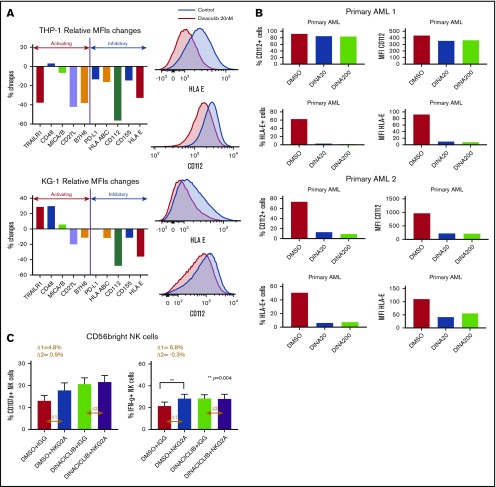Figure 3.
Dinaciclib modulates the expression of NK-cell ligands on AML cells and promotes NK-cell cytotoxicity against leukemic targets by disrupting the NK-cell–inhibitory HLA-E/NKG2A interaction. The expression of NK-cell ligands on leukemia targets were assessed by flow cytometry after leukemia cell lines (A) or primary patient-derived AML (B) targets were treated with dinaciclib or vehicle overnight. Percentage changes indicate changes of median fluorescence intensity (MFI) of NK ligands after dinaciclib treatment compared with vehicle treatment. The histograms are representative of 2 experiments. The ligand expression changes on THP-1 and KG-1 cell lines were examined in duplicates. (C) Healthy donors’ PBMCs were treated with 1 µg/mL NKG2A-blocking antibody (z199) or immunoglobulin G (IGG) isotype control for 1 hour and then incubated with KG-1 cells that had been treated with 20 nM dinaciclib or vehicle overnight. CD107a and IFNγ expression on NKG2A-expressing CD56-bright NK cells are shown. Error bars represent mean ± standard error of the mean. MICA/B, major histocompatibility class I chain-related protein A and B; PD-L, programmed death ligand; TRAILR, tumor necrosis factor–related apoptosis-inducing ligand receptor.

